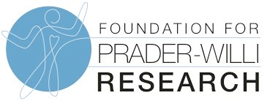 In social communication, the ability to appropriately recognize and process facial expressions is critical to understanding others' emotional and mental state. People can often "read" emotions on someone's face, including happiness, sadness, fear, surprise and anger. Scientifcally, this is called facial processing, and it's an important component of communication. Often, individuals with developmental or cognitive impairments also have deficits in social communication, which can stem from poor facial processing.
In social communication, the ability to appropriately recognize and process facial expressions is critical to understanding others' emotional and mental state. People can often "read" emotions on someone's face, including happiness, sadness, fear, surprise and anger. Scientifcally, this is called facial processing, and it's an important component of communication. Often, individuals with developmental or cognitive impairments also have deficits in social communication, which can stem from poor facial processing.
Research on Social Communication in PWS
Using a technology called eye-tracking, researchers in Toulouse, France, are working to gain a better understanding of how individuals with PWS may process facial cues differently from those without PWS. Using a series of photographs and pictures, eye-tracking quantifies gaze behavior — where an individual looks, and for how long. The research has been funded by a 2015 FPWR grant, The ComuFaces: The perception of communicative faces by infants with Prader-Willi syndrome.
The group presented some of their work at the IPWSO conference in Toronto last month. They reported on a study of 28 young adults (14 with PWS and 14 without), showing that when exploring someone's face, individuals with PWS have a different gaze pattern than those without PWS. Specifically, individuals with PWS tend to pay more attention to the mouth, whereas those without PWS pay more attention to the eyes. The eyes contain the greatest amount of social communication on the face. Therefore, this altered gaze pattern may contribute to deficits in recognition of emotion and social communication in PWS. The group will be continuing this work in infants with PWS, to better understand how early these differences in facial processing arise, and whether they can be improved through early intervention.
Interpreting and Responding to Social Cues
In addition to facial processing, Drs. Tauber and Barone are exploring other ways that individuals with PWS may differently interpret and respond to social cues. They recently published a paper on Deficits in Voice and Multisensory Processing in Patients with PWS. Multisensory processing is how information from our different senses are integrated by our nervous system — information from sight, sound, touch, smell, taste, etc. For this study, a variety of tests were used including reaction time to visual stimuli, reaction time to auditory stimuli, and the ability to recognize a human voice among other environmental noises. The results showed that individuals with PWS react to sight and sound stimuli significantly more slowly, and have more difficulty recognizing human voices among enviromental sounds. Consistent with previous studies that suggest the uniparental disomy (UPD) form of PWS is associated with a higher risk of autistic behaviors, the difficulties in sensory processing were more challenging for those individuals with who had PWS by UPD.
Altogether, the work from Drs. Tauber and Barone suggests that individuals with PWS are more likely to have an impaired ability to gain information from voice and face signals. This likely contributes to issues with social communication. Continuing to gain a better understanding of how these abilities develop in PWS will help inform clinical therapies and interventions with the goal of improving social communication in PWS.








